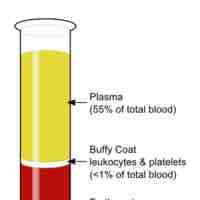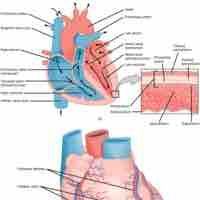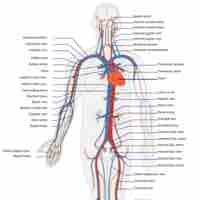Chapter 40
The Circulatory System
By Boundless
The circulatory systems is a network of blood vessels supplying the body with oxygen and nutrients, while removing carbon dioxide and waste.
The circulatory system can either be open or closed, depending on whether the blood flows freely in a cavity or is contained in vessels.
The circulatory systems of animals differ in the number of heart chambers and the number of circuits through which the blood flows.
The many roles of blood include delivering nutrients and oxygen to cells, transporting waste from cells, and maintaining homeostasis.
Red blood cells, made from bone marrow stem cells, are crucial for the exchange of oxygen and carbon dioxide throughout the body.
White blood cells, also called leukocytes, play an important role in the body's immune response by identifying and targeting pathogens.
Platelets and coagulation factors are instrumental in plugging damaged blood vessel walls and stopping blood loss.

Plasma is the liquid component of blood after all of the cells and platelets are removed; serum is plasma after coagulation factors have been removed.

The heart pumps blood through the body with the help of structures such as ventricles, atria, and valves.
Blood vessels include arteries, capillaries, and veins which are responsible for transporting blood throughout the body.
The cardiac cycle uses mechanical actions and electrical signals to push blood in and out of the heart.

The heart pumps oxygenated and deoxygenated blood throughout the body in a complex system of arteries, veins, and capillaries.
Blood pressure is the pressure of blood against the blood vessel walls during the cardiac cycle; it is influenced by a variety of factors.